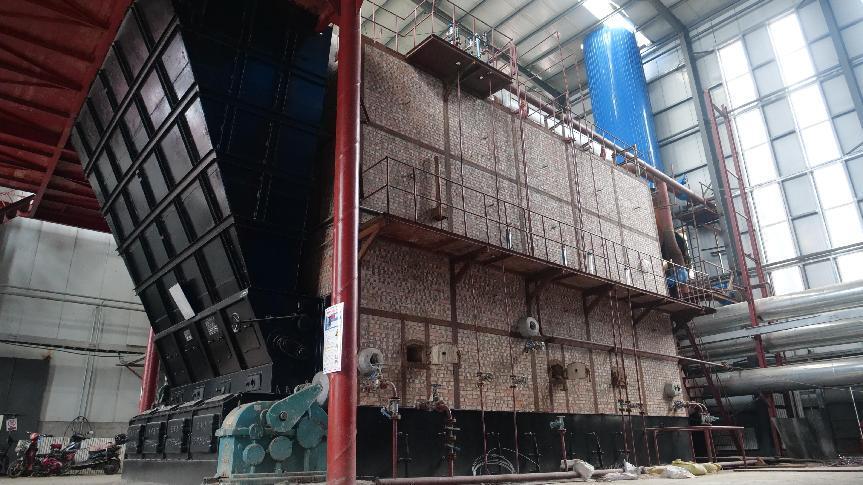
Dec . 18, 2024 04:54 Back to list
coal fired steam boiler
The Role and Functionality of Coal-Fired Steam Boilers
Coal-fired steam boilers have been a cornerstone of industrial and power generation processes for many years. As one of the oldest technologies used to convert thermal energy from the combustion of coal into mechanical energy, these boilers play a crucial role in the world’s energy infrastructure. Despite the recent shift towards more sustainable forms of energy, coal-fired steam boilers continue to be vital in various sectors, particularly in developing economies.
How Coal-Fired Steam Boilers Work
At its most fundamental level, a coal-fired steam boiler operates by burning coal to produce heat, which is then used to convert water into steam. The basic components of the boiler include the furnace, where the coal is combusted, the economizer, which recovers heat from the flue gases, and the steam drum, where steam and water are separated.
The combustion process begins when coal is introduced into the furnace, often through a system that ensures a consistent supply and proper combustion conditions. Air is also injected to facilitate the burning process, creating the necessary environment for efficient combustion. The combustion of coal produces hot gases that flow through the boiler’s heat exchange surfaces, heating water within the boiler structure.
Once water reaches its boiling point, it converts into steam, which can be utilized for various applications. This steam can then be directed to turbines in power generation facilities, where it drives the turbines to generate electricity. In industrial settings, steam is often used for heating, in chemical processes, or to drive machinery.
Advantages of Coal-Fired Steam Boilers
One of the primary advantages of coal-fired steam boilers is their ability to generate large amounts of energy at a relatively low cost. Coal is one of the most abundant fossil fuels available worldwide, making it a reliable energy source, especially in regions where other energy resources may be scarce. Additionally, advances in technology have led to more efficient designs, allowing for better fuel consumption and reduced emissions compared to older models.
Furthermore, coal-fired boilers can be designed to utilize various coal types, making them adaptable to different operational needs and local resource availability. This flexibility helps industries to optimize their energy use based on economic and environmental factors.
coal fired steam boiler

Environmental Considerations
Despite the advantages, coal-fired steam boilers face significant environmental challenges. The combustion of coal produces greenhouse gases (GHGs), primarily carbon dioxide (CO2), which contribute to global warming. Additionally, the process generates other pollutants, such as sulfur dioxide (SO2) and nitrogen oxides (NOx), leading to air quality issues and acid rain.
To mitigate these effects, modern coal-fired steam boiler systems often integrate emission control technologies, such as flue gas desulfurization, selective catalytic reduction, and particulate matter control. These systems help decrease harmful emissions and comply with increasingly stringent regulations. However, the efficacy and implementation of these technologies can vary significantly depending on the region and the regulatory landscape.
The Future of Coal-Fired Steam Boilers
As the world moves towards cleaner energy sources, the future of coal-fired steam boilers is uncertain. Many countries are investing heavily in renewable energy options, such as wind, solar, and hydropower. However, for many developing nations, coal remains a critical source of energy due to its affordability and availability.
In transitioning towards a more sustainable energy future, some industries are exploring ways to make coal-fired steam boilers more eco-friendly by incorporating cleaner coal technologies and hybrid systems that mix renewable energies with traditional coal-based generation.
Conclusion
Coal-fired steam boilers have played a significant role in the energy landscape for centuries. While they offer substantial advantages, particularly in terms of cost and energy production capacity, they are faced with serious environmental and regulatory challenges. The evolution of technology and the increasing push for sustainable energy solutions will determine the trajectory of coal-fired steam boilers in the coming years. As we navigate this transition, it is essential to balance energy needs with environmental considerations to create a more sustainable future.
-
High-Efficiency Commercial Oil Fired Steam Boiler for Industry
NewsJul.30,2025
-
High-Efficiency Biomass Fired Thermal Oil Boiler Solutions
NewsJul.30,2025
-
High Efficiency Gas Fired Thermal Oil Boiler for Industrial Heating
NewsJul.29,2025
-
High-Efficiency Gas Fired Hot Water Boiler for Sale – Reliable & Affordable
NewsJul.29,2025
-
High Efficiency Biomass Fired Hot Water Boiler for Industrial and Commercial Use
NewsJul.29,2025
-
High-Efficiency Biomass Fired Hot Water Boiler for Industrial Use
NewsJul.28,2025
Related PRODUCTS






















